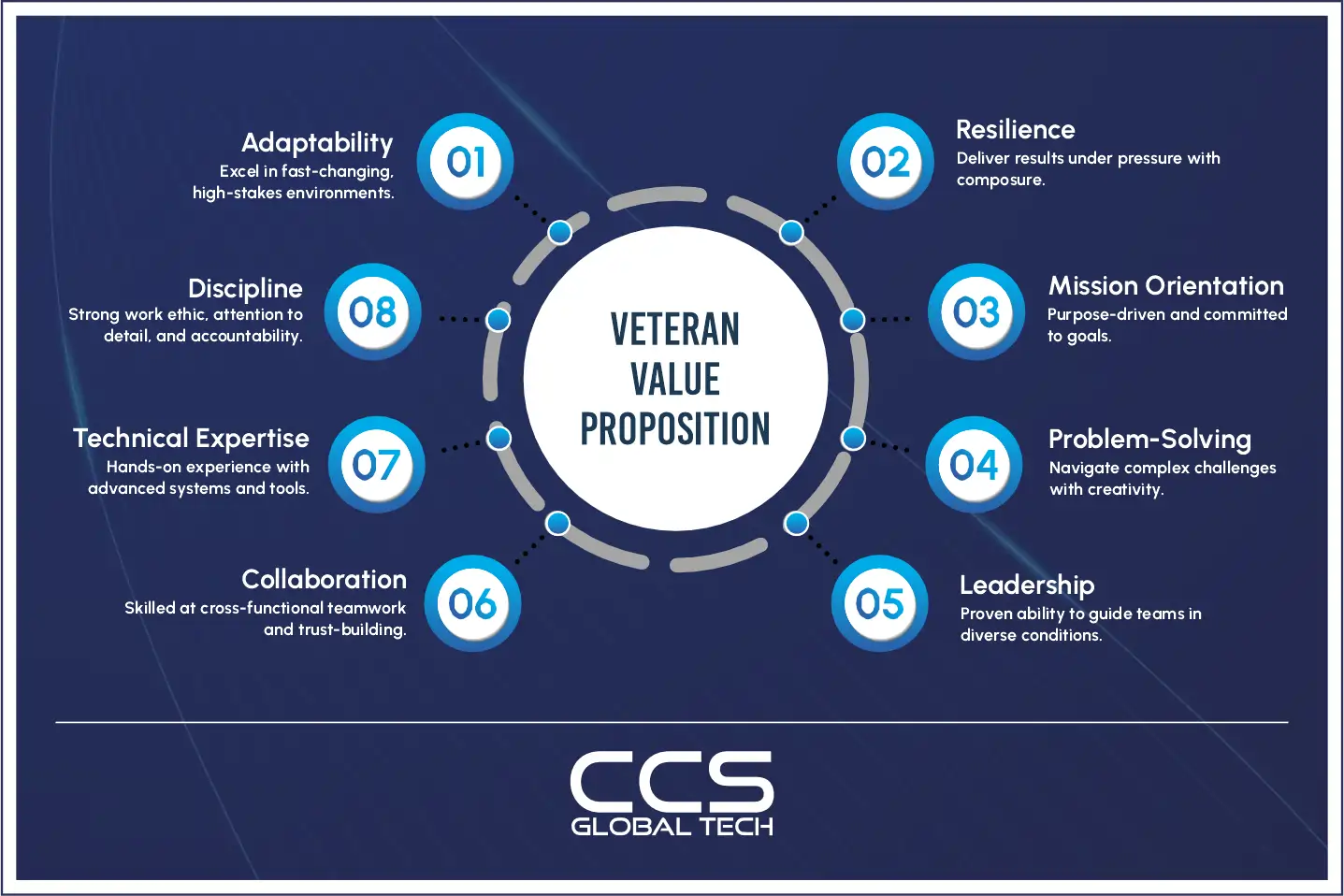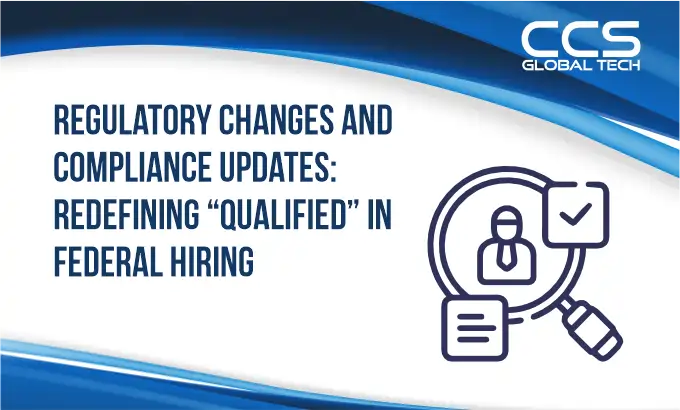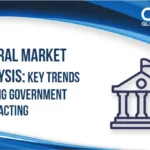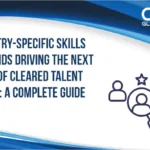Federal hiring has long been a tale of two sides: the disheartened job seeker and the irate hiring manager.
A federal agency manager is looking to fill a critical position on her team that has been unfilled for several months. It is essential to the agency’s mission and calls for a special combination of technical know-how and the kind of discipline that cannot be taught in a classroom.
When Human Resources finally sends her a list of applicants, there are only three names on it, illustrating the “Rule of Three,” which has guided federal hiring for more than a century. Although the rule was meant to ensure merit, it frequently felt like a lottery.
The manager reviews the resumes.
- Candidate A: a brilliant academic but lacks real-world experience.
- Candidate B: has some of the right skills but isn’t a perfect fit for the team’s collaborative style.
- Candidate C: technically proficient but lacks the adaptability she knows this role demands.
She sighs when faced with an impossible decision and chooses to pass on all three, prolonging the vacancy by one month and adding to the frustration of all parties.
Somewhere in the meantime, a veteran is attempting to convert his years of military service into a civilian resume. In the Army, he worked as a logistics specialist, overseeing intricate supply chains in demanding and uncertain conditions. He has a mission-first mentality and is an expert at solving problems quickly. He applied for the same federal job, but he never made it to the top three because his resume lacked the exact keywords the system was searching for. A system that couldn’t see past its own strict rules ignored his invaluable skills.
This is the story of a broken system that filtered out exactly the kind of talent it needed most.
Now, let’s pause for a moment and look at some facts:
Unemployment Rates: [Source]
- Overall Unemployment: In 2024, the annual average unemployment rate for all veterans was 3.0%, which was lower than the 3.9% rate for non-veterans.
- Gender Breakdown: The unemployment rate for male veterans in 2024 was 2.9%, while the rate for female veterans was 3.5%. Both were lower than their non-veteran counterparts.
- Generational Differences: The unemployment rate for Gulf War-era II veterans (those who served after September 2001) was 3.2% in 2024, showing little change from the previous year.
Federal Government Employment: [Source]
- Veterans in the Workforce: At the end of fiscal year 2024, the federal government employed approximately 713,000 veterans, making up about 24% of the entire federal civilian workforce.
- Public vs. Private Sector: In 2024, veterans were significantly more likely to work in the public sector. For example, 36.5% of employed veterans with a service-connected disability worked in the public sector, compared to just 12.4% of non-veterans.
- High-Veteran Agencies: Some agencies have a particularly high concentration of veterans. For example, over half (51.8%) of the civilian employees at the Department of the Air Force and nearly half (48.8%) at the Department of the Army were veterans.
Demographics and Occupation: [Source]
- Age and Gender: Veteran federal workers tend to be older and more likely to be male than their non-veteran counterparts. As of September 2024, 78.5% of veteran federal workers were men, compared to 44% of non-veterans.
- Common Occupations: Veterans are well-represented in a variety of key federal occupations. In 2024, veterans made up a high percentage of workers in fields like armaments (64.3%), general equipment maintenance (57.1%), and supply and inventory (53.7%).
The New Chapter: Redefining “Qualified”
We now have a complete picture, thanks to new regulatory changes, including the “Rule of Many” authorized by the National Defense Authorization Act (NDAA) for Fiscal Year 2019, the federal hiring process is undergoing a fundamental shift.
The Office of Personnel Management (OPM) has moved away from the restrictive “Rule of Three.” Now, hiring managers can receive a broader list of eligible candidates, allowing them to consider a better talent pool.
This is more of a philosophical shift. In order to find applicants who have the particular functional competencies required for a position, the new system encourages agencies to employ top-notch technical assessments. The new definition of “qualified” takes into account a candidate’s demonstrated ability, attitude, and ability to complete the task at hand, rather than just their test results or flawlessly formatted resume.
And no group is better positioned to succeed in this new environment than our nation’s veterans.
The Veteran's Narrative: A Story of Purpose and Proven Skills
Let’s go back to our Army logistics specialist. Her name is Sergeant Alex Rodriguez, and her story is different now. The federal manager’s computer screen no longer shows a list of three names, but a more comprehensive, skills-based pool of candidates. Alex’s resume, once seen as a collection of military jargon, has been translated by a veteran-focused staffing partner agency, highlighting the civilian-equivalent skills she’s mastered.
She makes the list not just because she’s a veteran, but because her experience in high-stakes environments and her demonstrated ability to solve complex problems are exactly what the agency needs. The new system recognizes the value of her lived experience, a narrative that unfolds in her resume and interview.
Adaptability and Resilience
Alex’s time in the military taught him to always be prepared for anything. She oversaw supply lines in situations where an entire operation could be jeopardized by a simple road closure. This was a problem she faced every day, not a hypothetical one. Under extreme pressure, she had to remain composed, navigate chaos, and think quickly.
She demonstrated a level of resilience that goes well beyond what is typically seen in a civilian’s resume when she successfully rerouted a convoy through a flooded area, ensuring that vital supplies arrived at their destination on time. This real-world experience is what a 2024 study on veteran employment highlighted: veterans are more flexible and adaptable than their civilian counterparts, with a smaller learning curve and an ability to manage complex demands.

Mission Orientation
For Alex, a job was never just a job. It was a mission. That mindset is a powerful force multiplier. A civilian employee might be driven by the paycheck or the next promotion, but a veteran is often driven by a sense of purpose forged in service to their country. This isn’t just a soft skill; it’s a profound cultural alignment with the federal government’s mission to serve the American people.
During her interview, Alex doesn’t talk about mere tasks and responsibilities. She talks about missions and objectives, and the satisfaction of contributing to a larger goal. It’s a passion for public service that is not teachable.
Discipline and Work Ethic
Discipline, timeliness, and attention to detail are ingrained in military personnel and become second nature. The mission, not the clock, determined Alex’s schedule. She arrives on time out of professional pride rather than because a manager is looking. Because of her training, she is able to divide a big, complicated project into smaller, more manageable tasks.
Her approach to feedback reflects this discipline as well; she is used to getting honest, helpful criticism and utilizing it to get better rather than taking it personally.
In 2024, the unemployment rate for all veterans was 3.0%, lower than the rate for non-veterans at 3.9%. This is no accident. Veterans are already a powerful force within the federal government, making up nearly 24% of the federal workforce, or over 713,000 individuals. But the numbers also tell a deeper story. For example, some agencies have a particularly high concentration of veterans, with over half of the civilian employees at the Department of the Air Force being veterans. This demonstrates a natural alignment between military culture and the agencies that understand and value it most.
The new hiring rules are designed to bridge the gap for the rest, ensuring the next generation of federal employees are the most capable and mission-driven talent available, starting with the men and women who have already proven their dedication to service.
The Path Forward: Partnering for a Stronger Future
For companies that specialize in veteran staffing, like CCS Global Tech, these changes aren’t just good news but a call to action, an opportunity to serve as the crucial link between our nation’s veterans and the federal agencies that need them.
By understanding how military skills translate to civilian competencies, these firms can help agencies navigate the new regulations and build a more adaptable workforce. This new chapter in federal hiring is a win-win. It’s an opportunity for our veterans to find meaningful careers that honor their service and leverage their unique talents.
It’s a chance for federal agencies to finally get the right people in the right jobs. The story of federal hiring is no longer one of bureaucratic inertia but a story of strategic agility and a renewed commitment to the people who have dedicated their lives to serving our country.
FAQs
Q1- What are the biggest contracting trends federal agencies are prioritizing in 2025?
A: Federal hiring now focuses on competency-based assessments, verifiable skills, and compliance with OPM standards. Degrees alone are no longer enough; demonstrated ability is key.
Q2 – Why do compliance updates matter for federal HR and hiring managers?
A: They ensure fairness in candidate evaluation, minimize legal risks, and keep hiring practices aligned with updated diversity and merit-based principles.
Q3 – What impact do regulatory changes have on veterans and cleared talent in federal hiring?
A: Veterans and cleared professionals’ benefit from clarified qualification pathways but also face stricter credential validation and documentation requirements.
Q4 – How can agencies adapt their hiring process to meet new compliance requirements?
A: Agencies should revise job postings, integrate skills-based testing, update assessment tools, and perform regular compliance audits to remain aligned with federal mandates.
Q5 – What risks do agencies face if they ignore updated compliance standards in federal hiring?
A: Non-compliance can result in hiring disputes, audit penalties, candidate appeals, loss of funding, and reputational damage.
Q6 – How do compliance changes affect contractors and staffing firms supporting federal hiring?
A: Contractors must adjust candidate screening and documentation to align with new definitions. Failure to comply can lead to disqualification from contracts.
Q7 – What role does technology play in maintaining compliance in federal hiring?
A: Technology streamlines compliance by automating documentation, tracking regulatory updates, and supporting data-driven, bias-free candidate evaluations.
Q8 – How do regulatory updates impact diversity and inclusion in federal hiring?
A: Updated definitions of “qualified” often encourage broader evaluation criteria, promoting equitable access and reducing systemic barriers for underrepresented groups.
Q9 – What are the top strategies for agencies to future-proof federal hiring against regulatory changes?
A: Agencies should invest in compliance tools, train HR teams, adopt agile hiring frameworks, and maintain flexible qualification standards that adapt to new rules.
Q10 – How can federal HR teams stay ahead of ongoing compliance updates?
A: By subscribing to OPM guidance, attending compliance training, leveraging advisory services, and implementing proactive monitoring systems for new regulations.






